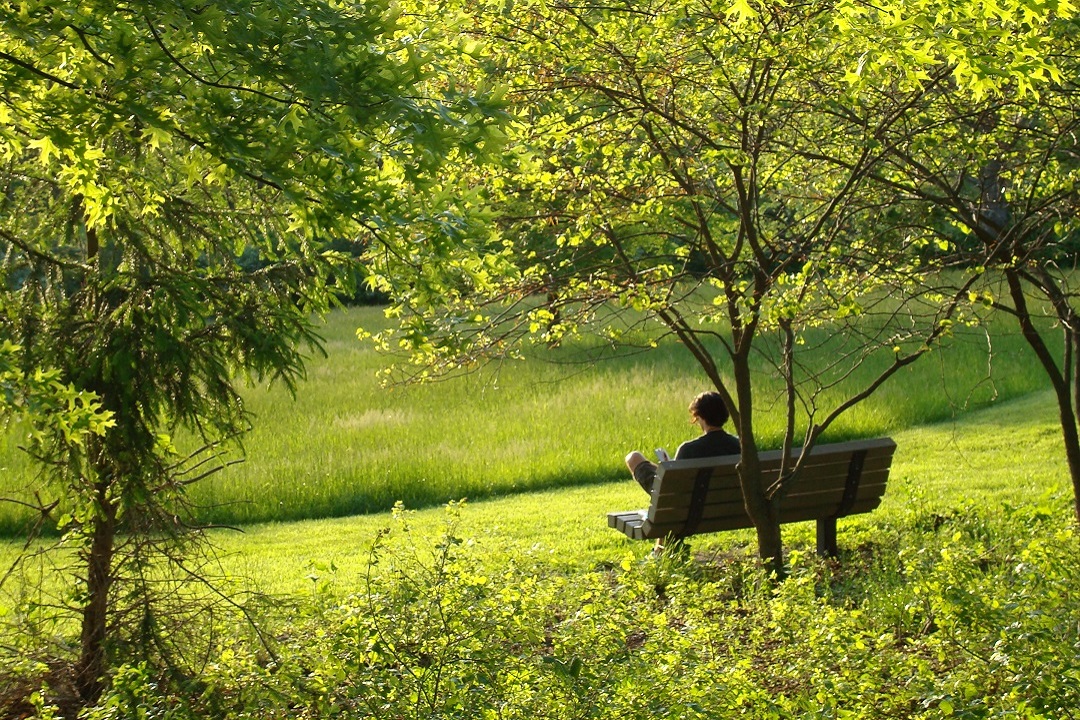As St. Louis city and county, and eventually the entire state, issued public health orders last spring to combat the coronavirus pandemic, some of the only places left for people to go for recreation were parks.
The orders, which allowed physical exercise but shut down gyms and recreation centers, drove so much traffic to our green spaces that the state had to temporarily close four of its most popular parks: Castlewood, Elephant Rocks, Watkins Woolen Mill, and Weston Bend.
Those closures, and the lengthier shuttering of campgrounds, created a situation where state employees could devote more time to natural resource stewardship.
“We were able to do more of it, with a lot more hours being dedicated to it, because all those activities take a tremendous amount of time when you’re working at 91 parks and sites all over the state,” said Mike Sutherland, director of Missouri State Parks.
The stewardship projects included control of invasive species like bush honeysuckle and autumn olive, as well as prescribed burns of forests and prairies.
“If you’ve ever seen a forest that’s had a regular prescribed burn as opposed to one that hasn’t, you’ll notice that it’s much more open, that the variety of plants is much higher, and you can just tell the ecosystem and natural community is thriving,” said Sutherland, who also mentioned that staff were able to do more repair of park infrastructure.

Despite temporary closures earlier this year, parks are more essential than ever.
St. Louis County also temporarily closed its parks and, as such, saw an increase in wildlife at places like Jefferson Barracks and Edgar M. Queeny parks, according to Tom Ott, director of St. Louis County Parks.
“It was almost immediately when the parks shut down, and it was mostly deer and turkey,” Ott said. “The deer would come out closer to the road and graze [there].”
Despite the abovementioned temporary closures, visitation to parks has increased dramatically during the pandemic, according to state and local officials.
“People have rediscovered the outdoors. What I’ve noticed is there are a lot of new visitors. It seems like if I talk to three people, two of them have never been to the park or site before,” Sutherland said.
Ott has also seen an increase in the number of visitors, particularly on trails at larger places like Creve Coeur Lake Memorial Park.
“We’ve seen a lot of people come out to the parks just because a lot of other things are shut down and they’re looking to get outdoors,” said Ott.
Still, hiking and biking are only two of the many activities that people typically do at parks. State officials closed campgrounds and then reopened them at reduced capacity, which meant a decrease in revenue. State parks rely on funding from a sales and use tax and from fees for campground reservations and tours.

Wildlife sightings increased at many parks, like Lone Elk, during COVID.
“It would be nice to be able to look way into the future and know what’s going to happen, but we can’t, so we just prepare for the challenges ahead. We’re maybe going to have to manage our budget closely, but I’m optimistic that it’s not going to be catastrophic from a budgetary standpoint.” Sutherland said.
The county has also seen a decrease in revenue because there have been fewer shelter reservations. Day camps and pools also have more limited capacities than before the pandemic.
“We just have to wait to see how this year goes, and once we get through the pandemic, hopefully things will get back to normal,” Ott said.
Terry Whaley, president of the Missouri Parks Association, a nonprofit that supports state parks, also sees a mix of positive and negatives in terms of the impact of the pandemic on parks. He cites the decrease in revenue — dining lodges were also closed — but says that “it’s offered a little bit of breathing time and opportunity for parks to make some repairs that they always have to do in the spring, but then they have a short spring and people are in the way.”
He would like to see the pandemic have a lasting positive affect on parks.
“I’m in hopes that the park profession can somehow hang onto the experiences that the pandemic has put on our parks in terms of increased visitorship and increased use and demonstrate the importance of parks and open spaces within our community,” said Whaley. “In other words, it’s not icing on the cake when everything else is paid for. It was obviously the safe place to go for fresh air, exercise, and experiences in nature that people crave.”
Author: Eric Berger is a regular contributor to Terrain Magazine.


Leave A Comment